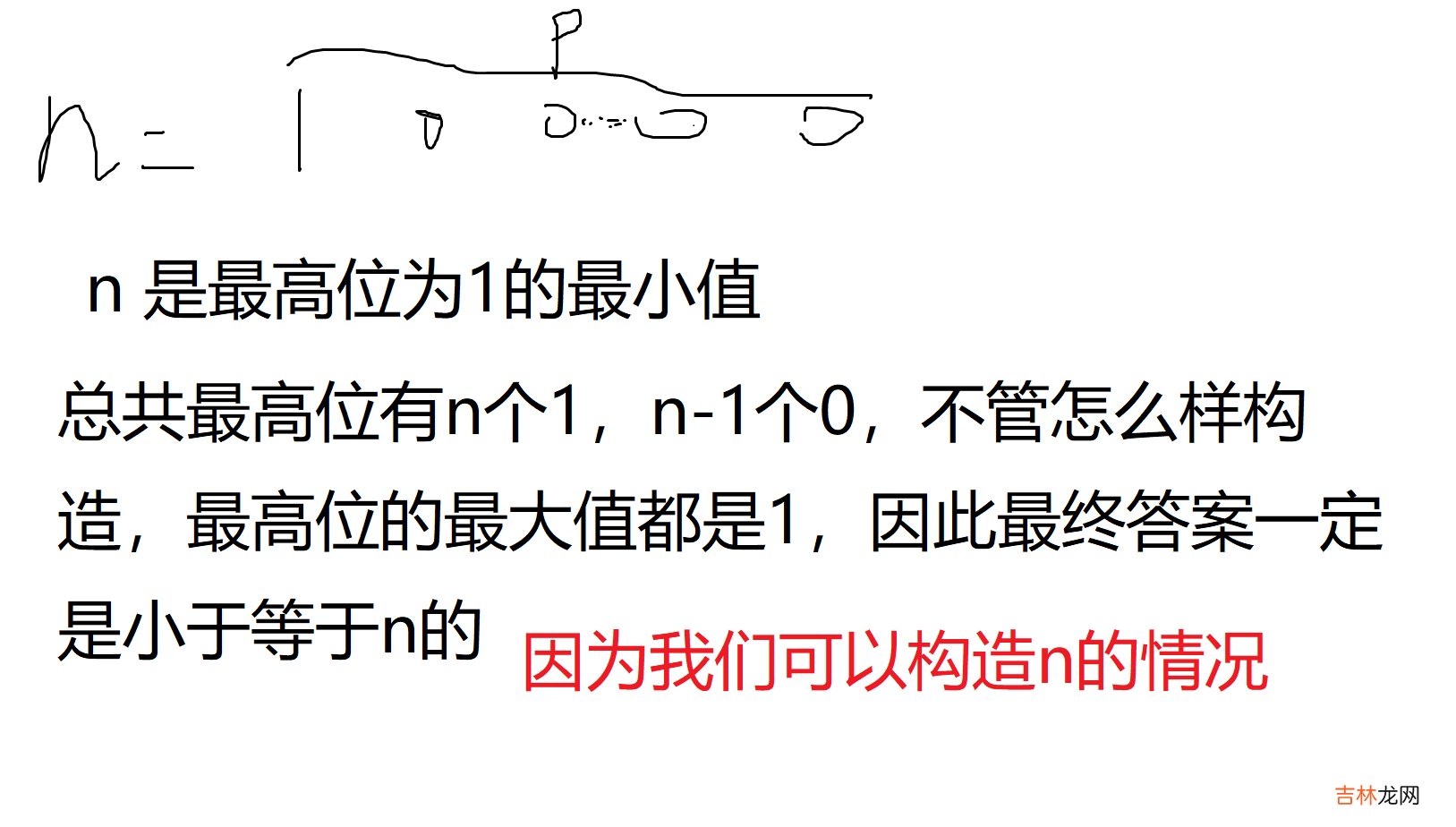题意给你个数p,n = 2^p;有一棵树有n个节点,告诉你怎么连边;每个点有个权值,每条边也有个权值,权值需要自行分配,[1,2,3..n...2n-1],总共2n-1个权值;你需要选一个节点,使得他到所有其他边或者节点的简单路径的异或最大值最小 。
思路显然,给你个p,不直接给你n一定是有潜藏的东西的,分析一下,n = 2^p, 那么n 的结构一定是 1 000000 ,1后面都是0,那可以推测出最终的答案一定是小于等于n的

文章插图
1. 初始节点可以随便选的,但是它的值一定设为n2. 处于一个点的连接点与边来说,他们的关系一定是x,x+n,这样他们的异或值一定是n,可以保证答案在0-n之间改变,注意x与x+n的位置设置 3. 如果不这样构造,最高位是1的情况下,一定不优于这种构造
代码
#include<bits/stdc++.h>using namespace std;int n, p, st;vector<pair<int, int>> g[300005];int ans[300005], w[300005];void dfs(int x, int fa, int pre) {for (auto k: g[x]) {if (k.first == fa)continue;st++;if ((st ^ pre) <= n) {w[k.second] = st;ans[k.first] = st + n;} else {w[k.second] = st + n;ans[k.first] = st;}dfs(k.first, x, pre ^ n);}}void run() {cin >> p;n = 1 << p;for (int i = 1; i <= n; i++)g[i].clear();for (int i = 1; i < n; i++) {int x, y;cin >> x >> y;g[x].push_back(make_pair(y, i));g[y].push_back(make_pair(x, i));}st = 0;ans[1] = n;dfs(1, 0, n);cout << 1 << '\n';for (int i = 1; i <= n; i++)cout << ans[i] << " \n"[i == n];for (int i = 1; i < n; i++)cout << w[i] << " \n"[i == n - 1];}int main() {int t;cin >> t;while (t--)run();return 0;}【Codeforces 1670 E. Hemose on the Tree】
经验总结扩展阅读
- Div. 1 + Div. 2 Codeforces Round #831 A-E
- Codeforces Global Round 23 A-D
- Div. 4 Codeforces Round #827 A-G
- Div. 3 Codeforces Round #826 A-E
- Div. 3 Codeforces Round #828 A-F
- Codeforces 1672 E. notepad.exe
- Div. 2 Codeforces Round #830 A-D
- Div. 2 Codeforces Round #829 A-E
- Div. 2 Codeforces Round #829 /CodeForces1754
- Div. 1/Div. 2 Codeforces Round #829 1753 A B C D 题解















